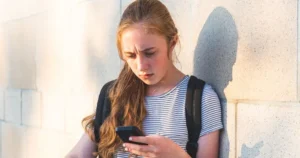Fake news and misinformation facts & advice
Help children think critically about the information they see online to keep things positive and safe. Choose a guide below to help children avoid spreading misinformation.
 Close video
Close video
What’s inside the hub
 Close video
Close video
What is misinformation?
Get insight into what misinformation is and the impact it can have on young people.
 Close video
Close video
How to prevent misinformation
Advice to show children how to spot dis/misinformation and fake news.

Dealing with misinformation
Tips and tools to deal with misinformation and fake news.

Misinformation resources
Explore resources to help you deal with fake news and information.
 Close video
Close video
Online critical thinking
Get tips to empower children to make smarter informed choices to navigate their online world safely.

Find the Fake quiz
Quiz to test children’s knowledge of mis/disinformation and fake news online and help them spot them.
Featured misinformation articles
 Research
Research
Connected and conflicted: Children’s perspectives on restricting social media for under-16s
We take a deep dive into children's perspectives on banning social media for under-16s to support wellbeing.
 Q&A
Q&A
How can parents manage the impacts of international news on children and teens?
Experts share advice to help parents and carers manage children's anxiety around international news.
 Expert opinion
Expert opinion
How to counter online hate and extremism with young people
Hate and Extremism Analyst, Hannah Rose, shares insight into how young people might get involved online. Learn how to counter online hate.
 News & blogs
News & blogs
What are algorithms? How to prevent echo chambers and keep children safe online
Algorithms are an important part of social media feeds, but they can create echo chambers which lead to issues of online hate, misinformation and more.
 Q&A
Q&A
Thinking critically about news on social media
Encourage children and young people to think critically about news they see on social media with expert advice from Dr. Elizabeth Milovidov and Lauren Seager-Smith.
